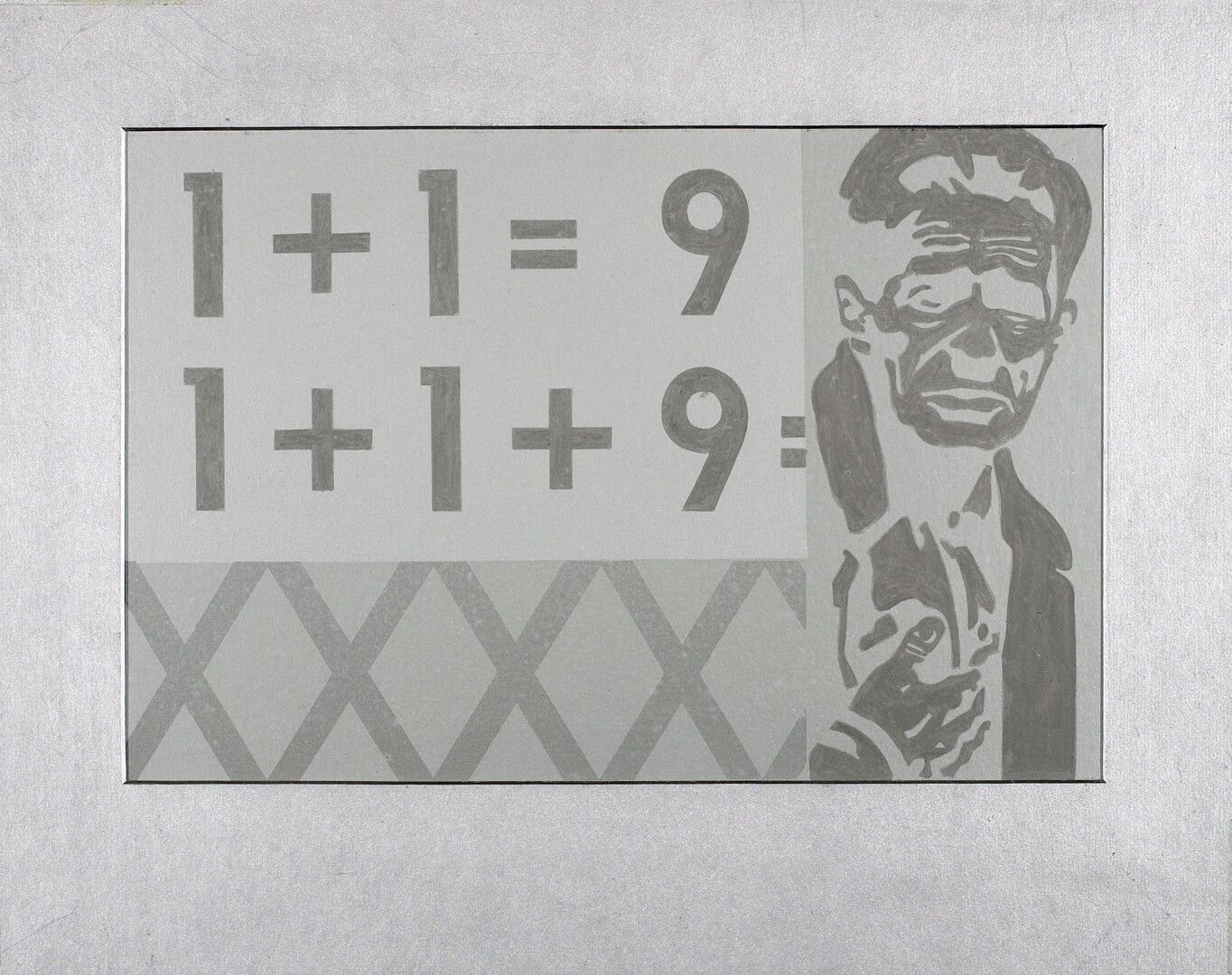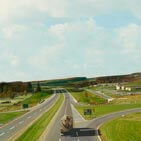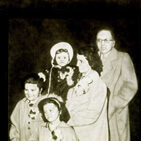Plus Nine 1966

Jack Chambers, Plus Nine, 1966
Silkscreen with hand painting on illustration board, 25.1 x 37.8 cm
Art Gallery of Ontario, Toronto
In 1966 and 1967 Chambers devoted himself exclusively to filmmaking and to a series of so-called silver paintings, radical works in aluminum paint that use the positive/negative visual effects of the paint to convey movement. These surfaces instill optical movement, a dynamism that is magnified here by the three number sequences that we cannot help but read as incomplete. Chambers makes these numbers move by leaving their mathematical formulas unresolved in the Arabic sequence in the top left and by truncating the series of Roman numerals that run beneath. Rows of Xs are highly connotative, suggesting numbers, poison, porn, and even a primitive signature. We are transported from the integer zone to that of less abstract, worldly imagery on the right by the equals sign that points, as it were, to the half-length male portrait. We are fixed by the bold visage of this man. He is not a member of the Chambers clan; the source photo is from the magazine Saturday Night.
Such borrowing from public visual culture was, by 1966, an established practice: Chambers said that he used photographs from a magazine from New Zealand for the figures in All Things Fall, 1963. Was he simply scanning for engaging imagery in magazines, a common practice in the era of Andy Warhol (1928–1987), or should we read more from the context in which this picture of poverty appears, an article on urban indigence called “The Salvation Army’s First Hundred Years,” by Jeannine Locke? Chambers had experienced poverty in Spain; its effects were part of his keen social conscience, but he was not one to preach.

 About the Author
About the Author
 More Online Art Books
More Online Art Books
 Acknowledgements
Acknowledgements